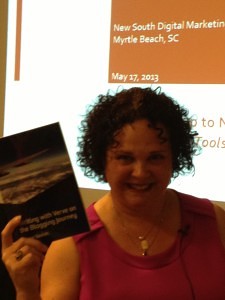This is a story about business opportunity for those successfully monetizing via online advertising who are interested in earning capital from that revenue stream.
I received a cold pitch, answered the phone and ended up agreeing to do this Q&A with Hanna Kassis, founder of OAREX Capital Markets, Inc. The most amazing thing about this guy is he’s in third year law school and launched this startup (during his first year) with the most zany business model I’ve ever heard. That’s why he gets the nod below; he deserves a smile today for all his hard work dialing for dollars.
And, this is what he wrote to me after our call, “Jayme, it was a pleasure talking to you today. It’s rare to just find a number or contact on some website and reach out to them and actually receive a moment of their time. Thank you for that.”
Hmm, I think he should be in PR. I love that he spelled my name right; no one does that even though it’s right there in front of them. Actually, Hanna found my blog post, Who’s Monetizing Online? republished on Steamfeed and reached out to the folks I referenced in that piece. Then he reached out to me; however, he didn’t know I wrote the article or that I was a professional award-winning blogger. Hmm, maybe he shouldn’t be in PR (heh).
All that aside, I’m impressed; I hope you will be, too.
Interview with Jayme Soulati & Hanna Kassis, OAREX Capital
What is OAREX and what do you guys do?
We are an “online advertising revenue exchange” to help digital entrepreneurs take their businesses to the next level by providing them with capital based on future advertising potential.
How does this work?
Digital properties like websites, or any other digital property where ad space has been sold, have a future value — the advertising dollars that will be collected in the future.
Faced with a need or desire for capital, digital business owners have a few options. They can take out a loan, sell equity in their business, or sit around and wait for future advertising revenues to roll in. OAREX provides a fourth solution by allowing digital business owners to sell their future ad revenues in exchange for lump sum cash.
Are you lenders? Do you give your clients loans?
No, we are not lenders, nor do we take an equity stake in the businesses to which we provide capital. It’s completely risk-free.
What does risk free mean?
Risk free means we guarantee website owners a certain percentage of their expected future ad revenues. We generally pay 30-75 cents on the dollar (thus, guaranteeing future revenues today) and take the chance that the website doesn’t generate as much in advertising revenues as expected. We take the risk away from the website owner and assume 100% of it, meaning, if the website crashed while we owned the revenue streams, we would be the ones to suffer, not the website owner.
What kinds of contracts do you offer?
We purchase online advertising revenues for the next three, six, nine or 12 months. Once it expires, it’s as though the client never had anything to do with us, meaning they owe us no debt and maintain the same ownership percentage they had when we first met (assuming they haven’t changed their position while we had a contract with them).
So how does OAREX get paid?
During the terms of the contractual agreement, we collect payments from our clients after advertisers pay them. It’s really a good faith transaction; we’ve been extremely cautious about who we do business with.
Isn’t there a moral hazard, i.e., someone takes your money and then they quit blogging.
Good question. The answer is no, and here’s why: assume we purchase six months worth of future ad revenues for a website, and then the website quits blogging or producing content or they shut it down (though in our contract with our clients there is an obligation on their part to do exactly what they have been doing in terms of “operations”). Naturally, if they did this, though, the revenues would decrease. We may lose our money or not collect what we expected. When the contract ends and they start receiving ad revenue again in the seventh month, they won’t be earning anything either. So really we position ourselves with our clients so that its win-win or lose-lose. If we go down, they go down. Thankfully, we haven’t encountered anything like that, but it won’t be a surprise to us should it ever happen. Every business has bad customers they have to deal with.
Who is your target market?
Broadly speaking, anyone who has sold advertising space on an intangible medium. Specifically, website owners, app developers, YouTube channel owners and even Twitter account owners. There are different risks and factors associated with each of these, but they all have one thing in common — present value based on advertising revenues. We can offer the same service to all of them — help them realize the present value today via lump sum cash.
How do you know how much money they’re going to earn?
Well, we don’t. It’s sophisticated speculation. Generally, I take all of their website data, both analytics and earnings, and plug it into a model I’ve built in Excel that calculates various averages and growth rates. Then I consider qualitative factors such as frequency with which they publish, type of content, seasonality (e.g., we have a client that blogs about video game reviews, and hits tend to rise pre-holidays on those kinds of websites). All of these factors boil down to our offer price, which is the starting point of negotiations between us and the potential client.
Who are you?
I graduated with an undergraduate degree in accounting in 2008, and immediately pursued a masters degree in financial economics from Youngstown State University. This gave me enough hours to sit for the CPA exam in Ohio. I am a licensed CPA in Ohio, but don’t do anything in the way of practicing accounting. My first job out of college was in public accounting for about eight months, then I left that job to run a U.S. Congressman’s campaign. That job gave me experience and skills to be resourceful and operate an entity. I also taught economics at YSU as an adjunct professor for an academic year. After that I left to the West Bank of Palestine and had a stint with the Palestine Stock Exchange as a financial analyst and translator. At the moment, I am in law school and expect to graduate in May of 2014. I started OAREX after my first semester of law school and here we are today. The Youngstown Business Incubator supports our business.
Reach Hanna Kassis, founder of OAREX at hanna at oarex dot com.














